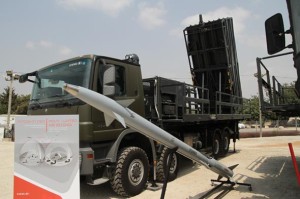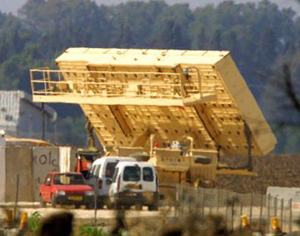The South Korean defense ministry submitted to the parliament a 214.5 trillion won (US$192.6 billion) budget request for the 2014-2018 fiscal year period. The budget was submitted for deliberation on Thursday, as Parliament discussed the Seoul’s planned missile and missile defense programs, facing North Korea’s nuclear and missile weapons threat. The budget plan needs parliamentary approval before being implemented by the government in fiscal year 2014, which begins on Jan. 1.
13.7 percent of the budget (US$63 billion) will be used to establish a missile shield, and deterrence capability that will consist on ballistic and cruise missiles. This network will be augmented by surveillance and early warning satellites and high-altitude, long-endurance (HALE) drones (Global Hawk) – all to be procured in the next five years, Seoul’s Yonhap news agency reports.
Seoul has been developing its indigenous missile shield since 2006. This system, called the Korea Air and Missile Defense (KAMD) was relying on Raytheon’s Patriot PAC2 air-defense missiles received from the US and germany and two Green-Pine long-range early warning radars acquired from Israel. The budget draft also includes the additional purchase of PAC-2 missile interceptors and upgrading the current system to PAC-3 to deter North Korean missiles.

more insight for Defense-Update subscribers

After Pyongyang successfully launched a long-range rocket last December and conducted its third nuclear test in February, Seoul has been speeding up to establish a pre-emptive missile destruction system, so-called “Kill Chain,” to detect and strike North Korea’s missile and nuclear facilities. The Kill Chain is designed to detect signs of impending missiles or nuclear attacks from the communist country and launch pre-emptive strikes to eliminate the threat by using its advanced cruise and ballistic missiles to support its present missile defense system.
North Korea is believed to have over 1,000 missiles with varying capabilities as well as multiple launchers that can shoot rockets, putting South Korea well within its missile range.
The budget plan comes as the South Korean military is seeking to enhance its warfare capability to deter North Korean aggression before it takes back its wartime operational control from Washington in December 2015.
Under the proposed structure, if a transition is completed as scheduled, the South Korean military will play a leading role, and American forces will offer support during a potential wartime situation, fighting side by side with their Korean allies.
“The government is pushing for major weapons procurement programs by securing an appropriate level of defense budget,” Ju Chul-ki, the senior presidential secretary for foreign affairs and security, said in a Seoul defense forum on Thursday. “We are putting efforts to procure weapons to establish the Kill Chain to pre-emptively detect and strike North Korean missiles, and to establish the KAMD, which is capable of intercepting the enemy’s missiles,”
In addition, each branch of the military is seeking to beef up its weapon systems against growing threats posed by North Korea.
The Army aims to procure the next-generation K-2 battle tank to replace aging K-1 and U.S.-built M48 tanks, and buy large combat helicopters in the next five years.
The Navy plans to build 5,000-ton destroyers, 1,800-ton submarines and landing platform ships to cope with rising tensions in Northeast Asia, in face of the ongoing territorial disputes between China and Japan.
The Air Force plans to purchase 60 next-generation fighter jets to replace its aging fleet of F-4s and F-5s starting from 2017 as well as large carriers and aerial refueling aircraft to extend the range of its F-15K and KF-16 combat jets.
The military also plans to adopt the Green Pine early warning and field guided rockets to deter provocations by North Korea.

















